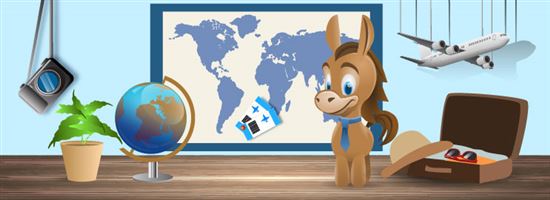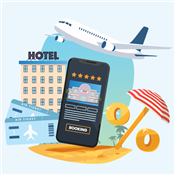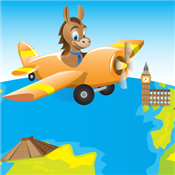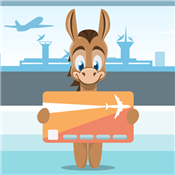How to Redeem Airline Miles for Award Flights
Today is all about the basics of redeeming airline miles. This is the part that newbies to the air miles game are always intimidated by... how exactly do I use the points?!
Today's lesson will give you an introduction to redeeming airfare and the best ways to use your points.
Saver vs. Standard Awards
First, many airline program have two different type of awards:
- Saver Awards: These are seats that can be booked with the least amount of miles. They have limited availability per flight.
- Standard Awards: Think of this like a full-priced airfare that is bought with miles instead of cash. So the miles needed are much higher.
For example, with United, a one-way domestic flight within the U.S. costs 12,500 miles with the Saver Award. But a Standard Award would cost 25,000 points. When we talk about award seats, we usually mean seats at the Saver level.
Saver seats have limited availability and get booked fast. To have better chances of snagging those seats, here are some key points to know:
Plan Ahead
 |
| © CreditDonkey |
We touched on this in the last lesson. The earlier you plan, the more likely you will find award seats to your destination.
Most airline allow you to start booking as early as 11 months before the departure date. So as soon as you have a general idea of travel plans (for example: Hawaii in December or Europe next spring), start looking for seats. And if you do find seats available in your timeframe, don't hesitate to book. Wait a few days and someone else may have jumped on them.
If you don't find seats right away, remember that award seats continuously get released based on flight demand and one could always pop up later. If you're planning early, you can afford to wait and continuously check for availability.
Flexibility Is Key
 |
| © CreditDonkey |
This means:
- Being flexible with your dates. This is the most important. Your ideal date may not have seats available, but there could be something available a few days before or after. If you have weeks, that's even better.
- Being flexible with the destination. Maybe you wanted to fly into Berlin, but there's no availability. Instead, there are seats flying into Prague. Take that instead and cover the distance on your own. Visit a new place you may not even have thought of at the same time.
- Being flexible with the route. You may also need to be willing to make a layover. It's more hassle, but worth it if you can save hundreds.
- Be flexible with the airline and airport. Sometimes, the airport nearest you may not carry a flight to your destination with award seats. You may have to travel to another airport in the area. And also be willing to fly with a partner airline.
Travel with Fewer People
You'll also have better luck if you're traveling solo or with just one other person. Finding four award seats on the same flight can be difficult, but you might be able to book two award seats and pay regular price for the other two.
Or you can do some creative planning. Maybe you need to split your family of four into 2 and 2. Each group takes a flight with another airline that goes to the same destination.
So, How to Redeem Your Miles?
When you've got your rough travel plans and are ready to redeem, make sure that:
- You have signed up for that airline's loyalty program (it's free)
- You have gathered enough points and have transferred them over
There are three ways to book:
- Online: Head to your airline's site and enter in your membership number. Search for your flight. You will see a list of options, how many miles they'll cost, and whether they're available or not.
- By phone: If you'd prefer that an agent searches dates and books the flight for you, you can call the airline. This may be the better option if you have a complicated itinerary with stopovers and such. Most airlines will charge a small fee for this.
- With a 3rd party booking service. There are award booking services that will help you book your trip with your points. They're experts who will come up with the best way to use your miles. This is good if you are traveling with more people or have more complicated requirements. The fee is higher, but it may be worth it to save yourself the hassle.
For your convenience, here are quick links to the three major U.S. carriers' programs page:
Airline Alliances
There are 3 major airline alliances. When you join one of the airline's loyalty programs, you will also be joining the entire alliance family. This means you can also fly with any of their partners.
Here are the alliances and major airlines within them:
- Star Alliance: United, Air Canada, Singapore Airlines, ANA, Lufthansa, Air China, and 22 more
- Oneworld: American Airlines, British Airways, Cathay Pacific, Japan Airlines, and 11 more
- Sky Team: Delta, Air France, KLM, Alitalia, Korean Air, China Airlines and 14 more
Our Favorite Uses of Airline Miles
 |
| © CreditDonkey |
This can get complicated, so in this lesson, we will just go over some of our favorite uses:
- U.S. Domestic: You have opportunities to find flights costing very few points with Southwest and JetBlue. Both of these programs use cost-based awards, which means that the number of points needed is directly based on the cost of the flight. You can find a one-way domestic flight for under 4,000 points. And you don't need to worry about seat availability either.
- International: We like United and American Airlines most for their well-priced award charts. In addition, United NEVER charges a fuel surcharge, not even on partner airlines.
- Visit Hawaii, Mexico, Central America, and the Caribbean: Use Korean Air SKYPASS (25,000 miles round-trip) or Flying Blue (30,000 miles round-trip).
- Japan: Using ANA Mileage Club to fly from the U.S. to Japan for 40,000 points in low season.
- Around the world trip: Use Cathay Pacific Asia Miles, as they allow up to FIVE stopovers and 2 open-jaws on a round-trip ticket. Their award chart is distanced-based, so the number of miles depends on the total distance traveled. This means that you could book as many as 5 destinations for the same number of points as just one trip, if your stopovers are all on the way. But be careful: Cathay Pacific does levy surcharges on a lot of the partner flights.
- No fuel surcharges: United never charges a fuel surcharge. Take advantage of its 1 free stopover / 2 open-jaw policies to visit more destinations with no additional points.
Here are some other things to watch out for and know:
- British Airways Avios is notorious for charging heavy surcharges on their long-haul flights. HOWEVER, they don't charge a surcharge on partner airlines Aer Lingus or Air Berlin. So if you're going somewhere where these airlines fly, you can travel to Europe for very few miles.
- American Airlines usually doesn't levy any surcharge EXCEPT for on British Airways and Iberia long-haul flights.
- Delta does not levy a surcharge when the flight takes off within the U.S. However, if you fly Delta (or its partners) starting from outside of the U.S., you will be hit with surcharges.
To read more in detail about the best ways to airline miles, read our in-depth articles:
- Best Uses of Chase Transfer Partners
- 23 Ways to Redeem Chase Ultimate Reward Points
- Best Uses of AMEX Transfer Partners
- 23 Ways to Redeem AMEX Membership Reward Points
Key Takeaways
- Start planning as early as possible. If you find seat availability, don't hesitate.
- Be flexible with your plans for the best chances of snagging award seats.
- Think about where you want to go and study up on the best airline programs to get you there.
In tomorrow's lesson, we'll go over the best ways to redeem hotel rewards.
Write to Anna G at feedback@creditdonkey.com. Follow us on Twitter and Facebook for our latest posts.





